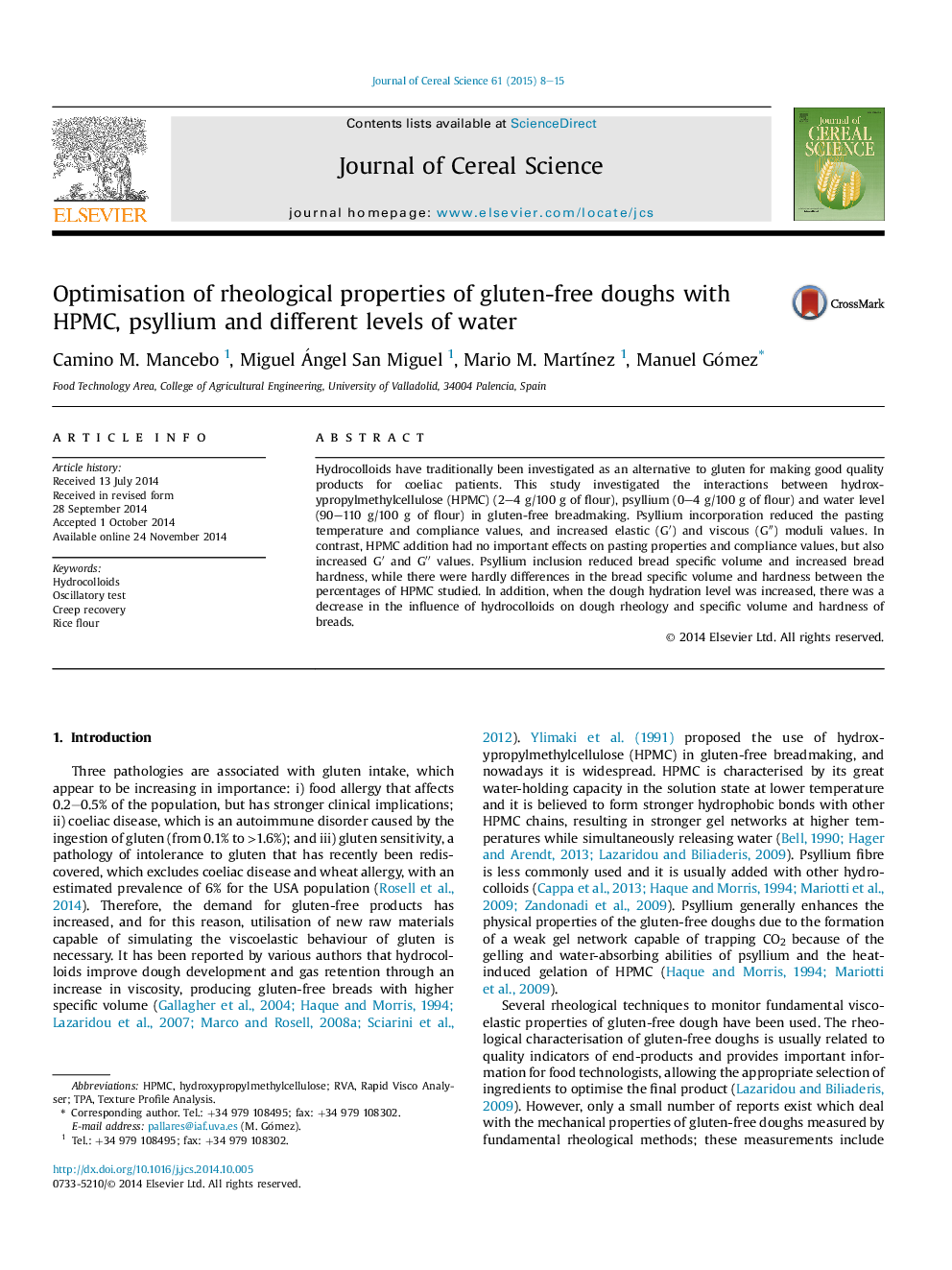| Article ID | Journal | Published Year | Pages | File Type |
|---|---|---|---|---|
| 4515694 | Journal of Cereal Science | 2015 | 8 Pages |
•HPMC, psyllium and water interactions were investigated in gluten-free bread.•HPMC and psyllium modified the dough rheology in different ways.•The creep-recovery test may be a better predictor of bread quality characteristics.•A higher amount of water in dough led to lower effects of hydrocolloids.
Hydrocolloids have traditionally been investigated as an alternative to gluten for making good quality products for coeliac patients. This study investigated the interactions between hydroxypropylmethylcellulose (HPMC) (2–4 g/100 g of flour), psyllium (0–4 g/100 g of flour) and water level (90–110 g/100 g of flour) in gluten-free breadmaking. Psyllium incorporation reduced the pasting temperature and compliance values, and increased elastic (G′) and viscous (G″) moduli values. In contrast, HPMC addition had no important effects on pasting properties and compliance values, but also increased G′ and G″ values. Psyllium inclusion reduced bread specific volume and increased bread hardness, while there were hardly differences in the bread specific volume and hardness between the percentages of HPMC studied. In addition, when the dough hydration level was increased, there was a decrease in the influence of hydrocolloids on dough rheology and specific volume and hardness of breads.
